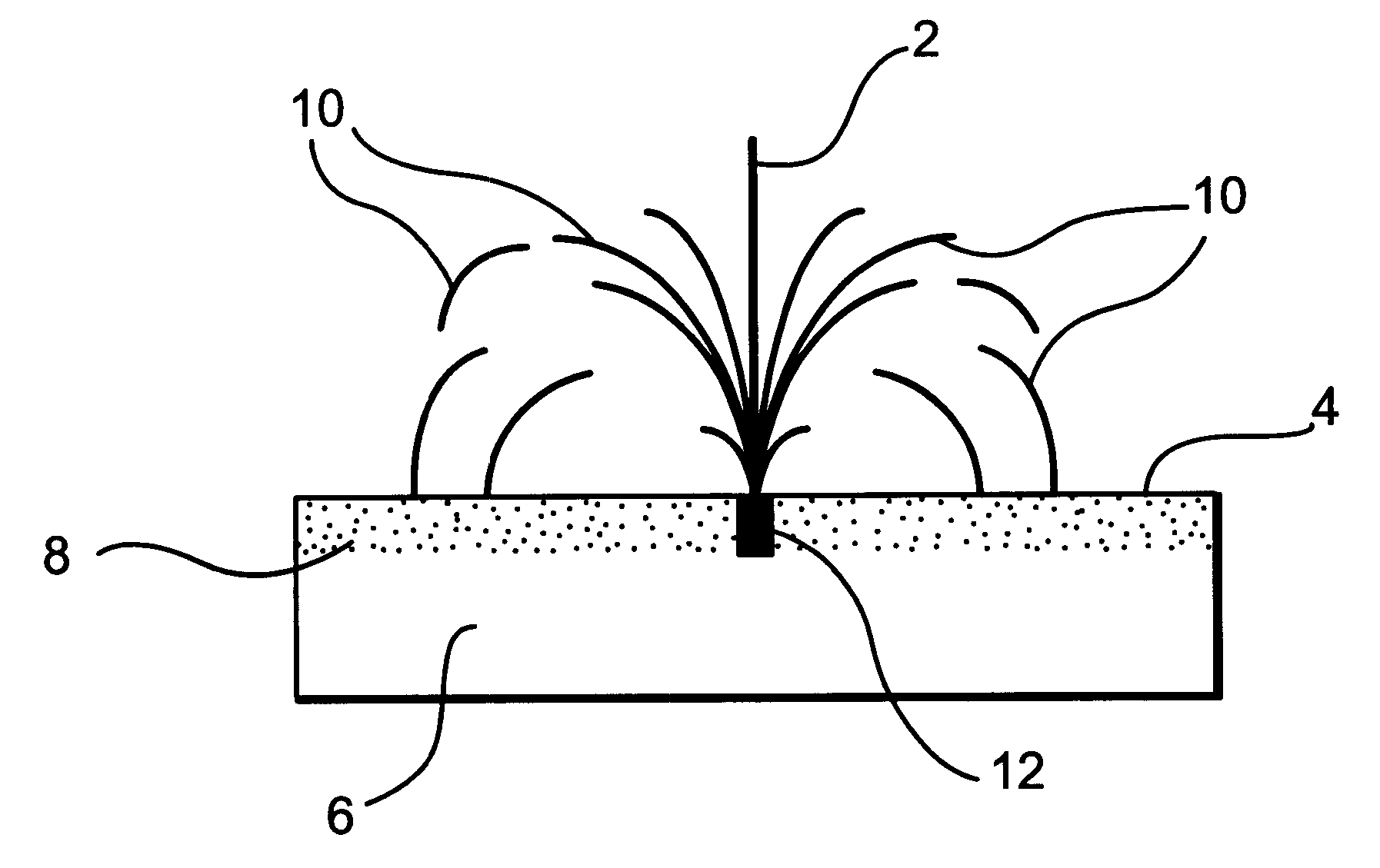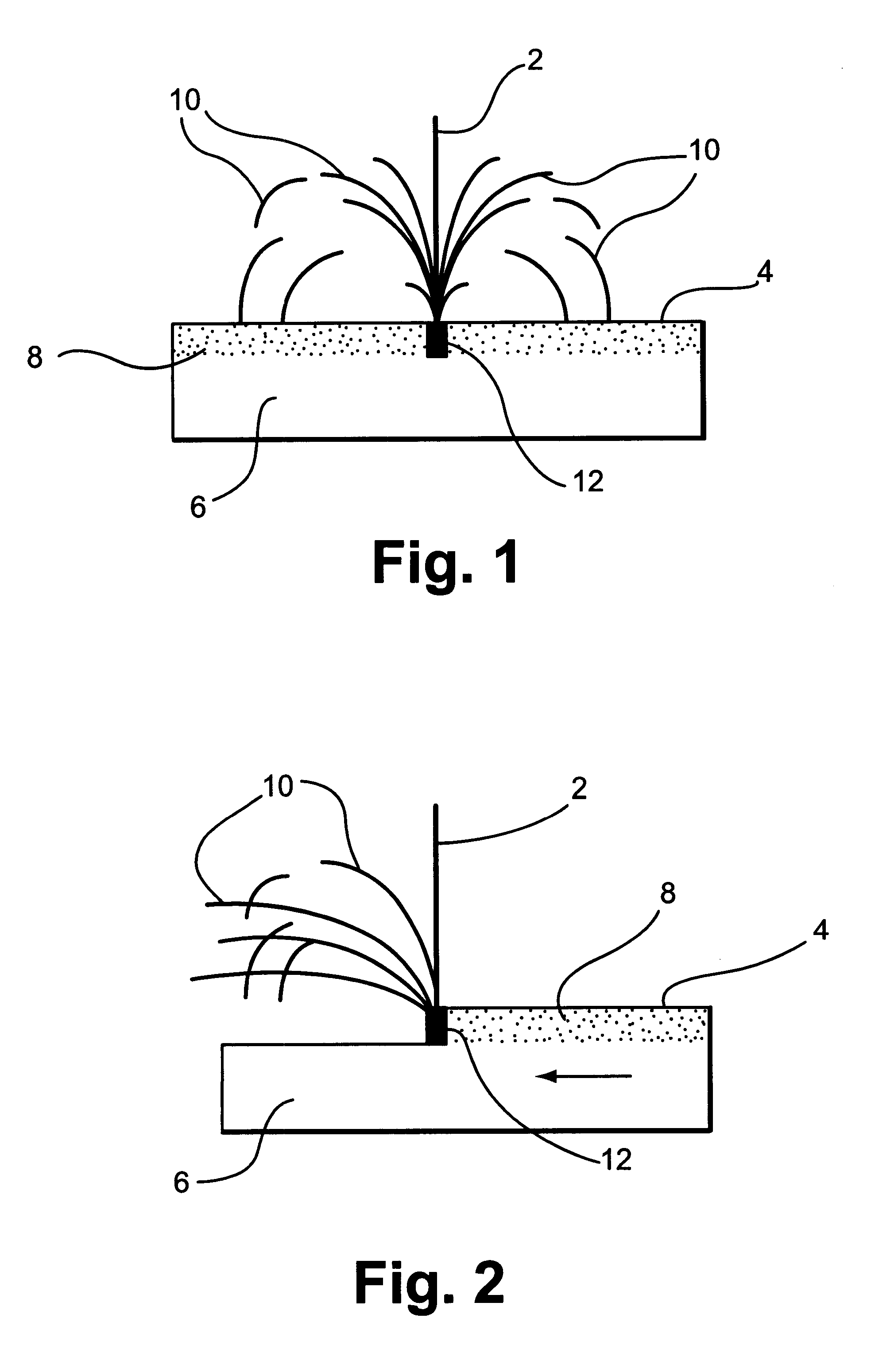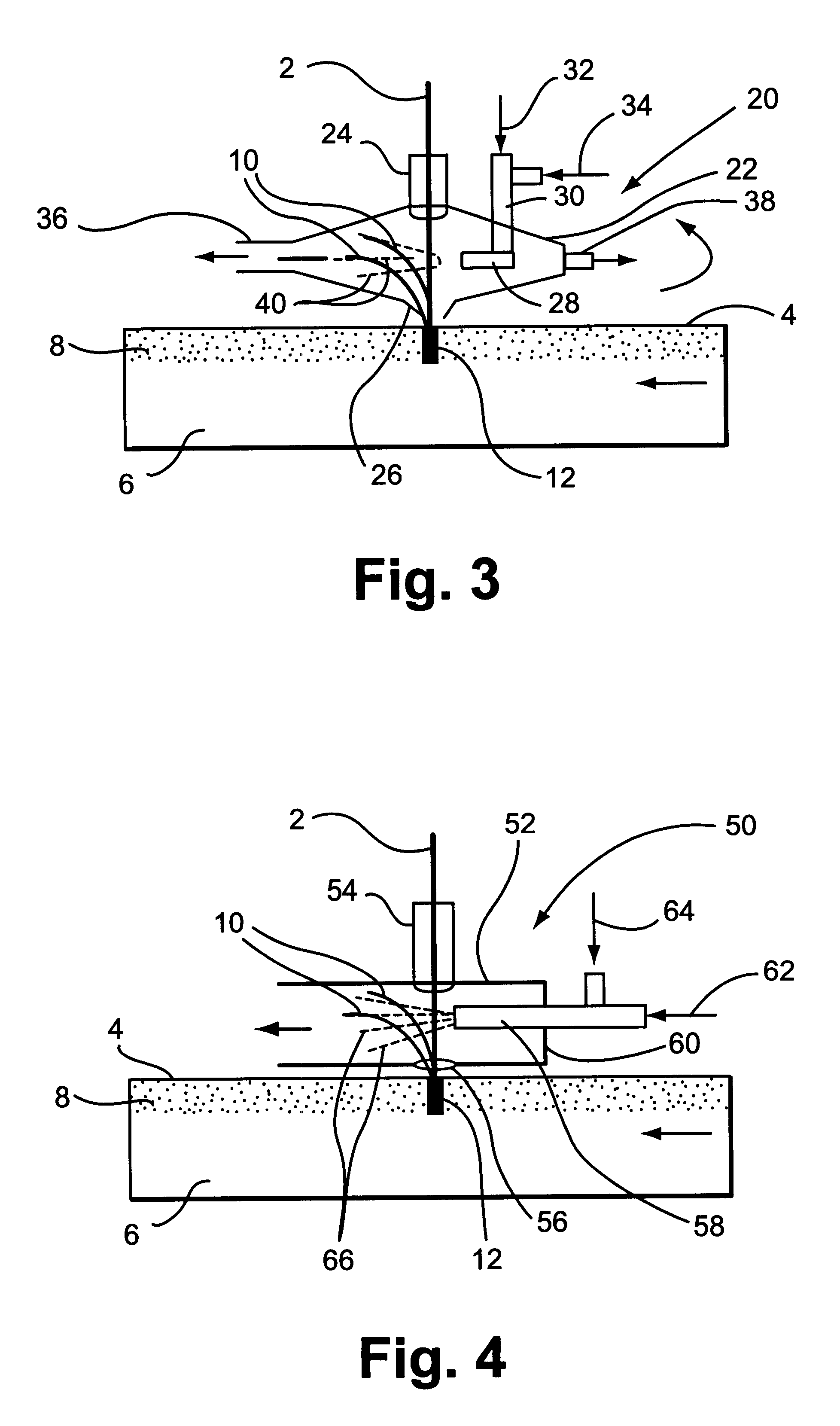Radioactive decontamination
a radioactive contamination and decontamination technology, applied in the direction of radiation therapy, electrostatic cleaning, cleaning process and apparatus, etc., can solve the problems of high running cost, ineffective decontamination techniques such as fluid shear blowing or paste/stripping, and surface contamination with radioactive substances
- Summary
- Abstract
- Description
- Claims
- Application Information
AI Technical Summary
Benefits of technology
Problems solved by technology
Method used
Image
Examples
Embodiment Construction
Referring now to FIG. 1, a laser beam 2 is shown impinging upon a surface 4 of a stationary metallic workpiece 6, the surface 4 having a layer of embedded radioactive contamination 8. The laser beam 2 has a power density of greater than 6 MW / cm.sup.2 and is operated at a pulse length of several milliseconds. At the point where the laser beam 2 meets the surface 4 a laser melt pool 12 is formed. Molten material 10, containing the radioactive contamination 8 is ejected from the melt pool 12 due to a laser-generated vapour recoil pressure of between 5 to 100 bar and to a lesser extent to a laser photo pressure (which is the power density divided by the speed of light). The ejected material may be thrown for distances of up to 2.5 metres from the melt pool 12.
In FIG. 2 the laser beam 2 is shown impinging upon the surface 4 of the workpiece 6 with the workpiece 6 now moving in the direction indicated by the arrow. As described in relation to FIG. 1, molten material 10 containing the radi...
PUM
| Property | Measurement | Unit |
|---|---|---|
| Pressure | aaaaa | aaaaa |
| Time | aaaaa | aaaaa |
| Metallic bond | aaaaa | aaaaa |
Abstract
Description
Claims
Application Information
 Login to View More
Login to View More - R&D
- Intellectual Property
- Life Sciences
- Materials
- Tech Scout
- Unparalleled Data Quality
- Higher Quality Content
- 60% Fewer Hallucinations
Browse by: Latest US Patents, China's latest patents, Technical Efficacy Thesaurus, Application Domain, Technology Topic, Popular Technical Reports.
© 2025 PatSnap. All rights reserved.Legal|Privacy policy|Modern Slavery Act Transparency Statement|Sitemap|About US| Contact US: help@patsnap.com



